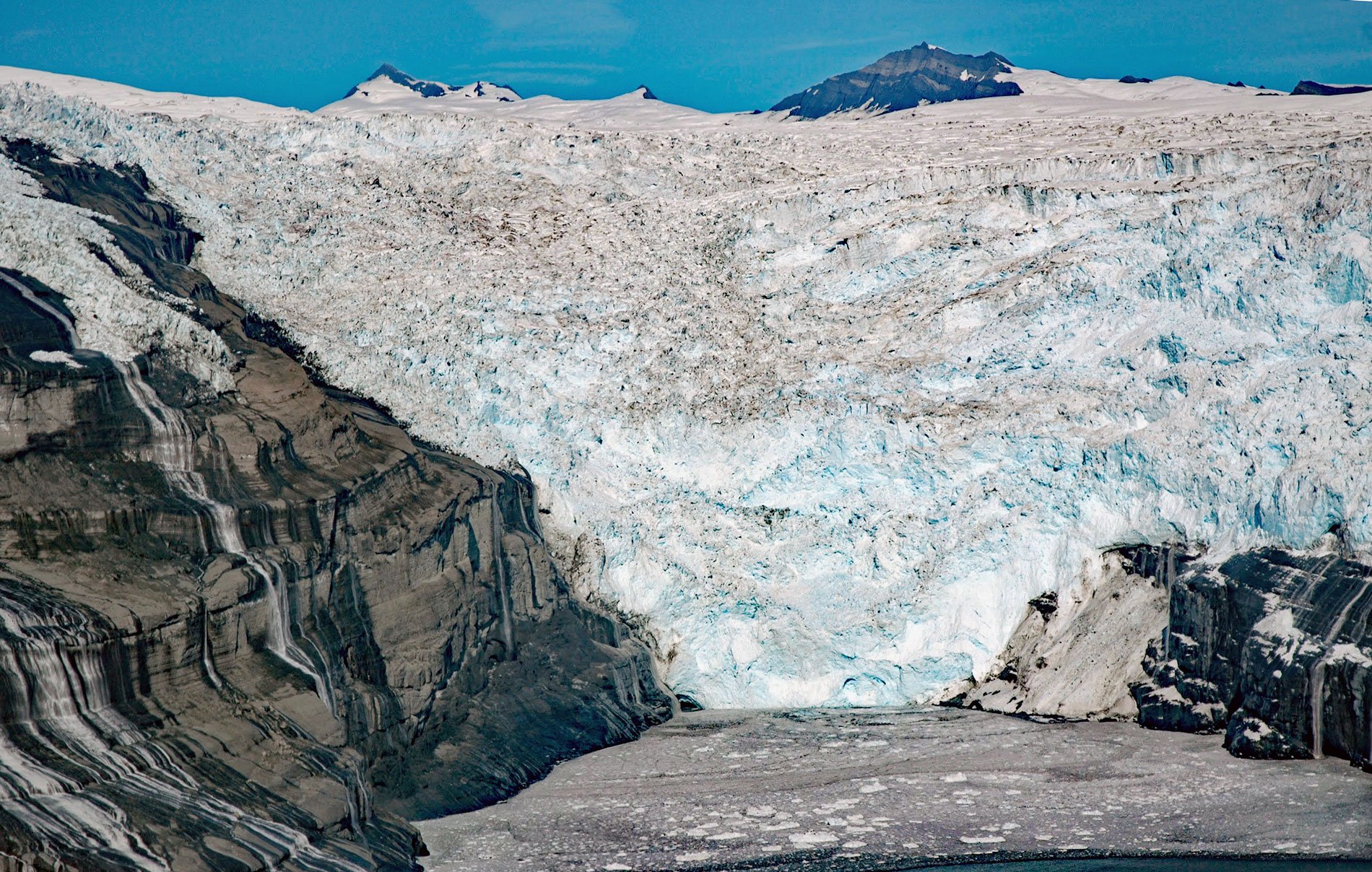Tsaa Glacier flows about 8 miles (13 km) southeast from the northeast flank of the Robinson Mountains and terminates in Tsaa Fjord, on the western coast of Icy Bay, about 147 miles (237 km) east-southeast of Cordova and 75 miles (121 km) northwest of Yakutat, Alaska. Tsaa Glacier was named after the northern Tlingit word for hair seal. The Robinson Mountains were named by I.C. Russell in 1891 to commemorate Lieutenant L.I. Robinson of the U.S. Revenue Cutter Service, who was drowned while landing at Icy Bay that year.
At the beginning of the 20th century, Icy Bay was filled with a tidewater glacier that calved directly into the Gulf of Alaska and the coastline was nearly straight. A century later glacier retreat has opened a multi-armed bay more than 30 miles (48 km) long. The original tidewater glacier retreated and divided into three independent glaciers, Yahtse, Tsaa, and Guyot Glacier.
Tidewater glaciers terminate in the ocean at either a grounded terminus or floating ice tongue. During the tidewater glacier cycle, glaciers slowly advance over the course of centuries, until thinning near the terminus initiates a rapid retreat that completes within decades, stabilizing only when the glacier has retreated into shallow water. In general, the retreat phase of a tidewater glacier can be triggered by changes in climate, but once the retreat is initiated, the glacier’s behavior is only weakly influenced by climate, and glacier geometry becomes a primary driver of ice flow. Read more here and here. Explore more of Tsaa Glacier here:

